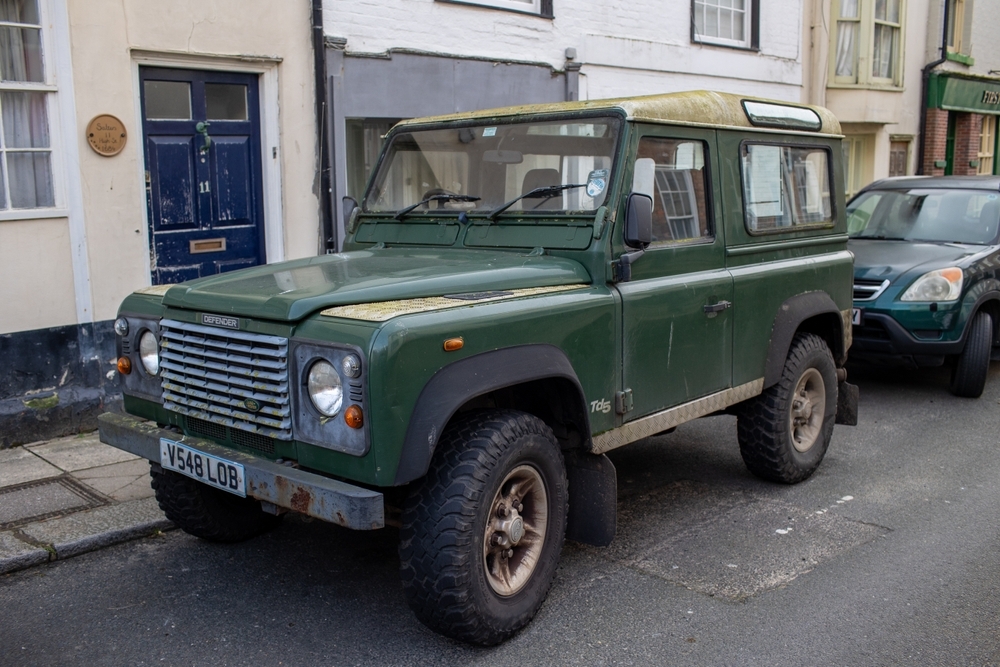The Defender is such an iconic name in the world of off-road vehicles, synonymous with reliability...
When it comes to cars, rust is the silent enemy that can quietly undo years of careful preservation and restoration. Left unchecked, a small patch of corrosion can quickly spread, eating away at the metalwork and undermining the structural integrity of your wonderful Defender. The good news is that, with a little vigilance and the right know-how, you can catch rust in its early stages and then deal with it before it turns into a costly nightmare…
Why rust occurs…
Rust is the result of moisture and oxygen reacting with iron and its alloys, often accelerated by road salt, mud, damp storage conditions and chipped paintwork. Older cars are particularly vulnerable because they were built long before modern galvanising techniques, making them more prone to corrosion in exposed or hard-to-reach areas.

Some common areas to check
Certain parts of a car are more susceptible than others. Wheel arches, sills, door bottoms, floorpans, exhausts, suspension mounts and around the windscreen are notorious rust traps. When checking your Defender, pay close attention to the seams, joints and underbody sections where dirt and water collect, as well as around any chrome trim or badges where moisture can lurk unseen.
Spotting the early signs of rust
Rust doesn’t always announce itself with huge, gaping holes. At first, you might notice some bubbling under the paintwork, a blistered surface, or a rough, flaky feel when you run your hand over a panel. Any discolouration, particularly orange or brown spots, is another tell-tale sign. Inside the car, damp carpets or a musty smell could point to hidden corrosion in the floor, as well.

How to tackle it
Once you’ve spotted rust on your car, the way you deal with it will depend on how far it has progressed. Rust develops in stages, and the treatment ranges from fairly simple fixes you could do at home, to more advanced repairs that may need professional help. Addressing the issue properly at the right stage is crucial if you want to stop it spreading and causing long-term damage.
Surface rust
Surface rust is the earliest and easiest form to deal with. It usually appears as small patches of discolouration or faint orange specks, often on exposed paint chips, scratches or stone chips on the bonnet and wheel arches.
To treat it, start by cleaning the affected area thoroughly, removing any dirt, wax or grease. Use sandpaper or a wire brush to carefully strip away the rust until you reach bare, shiny metal. It’s important not to rush this stage, as leaving even tiny traces of rust behind can allow it to return. Once it’s clean, give it a good wash and dry and then apply a rust converter to neutralise any microscopic corrosion and prevent it from spreading. After this, prime the area, repaint it to match your Defender’s finish, and seal it with a clear coat. Done properly, this repair can be almost invisible and will stop surface rust from becoming a bigger problem.
Scale rust
Scale rust is more serious and indicates that corrosion has been eating into the surface for some time. The metal will look rough, flaky and pitted, and may feel brittle when tapped. Left alone, this kind of rust quickly weakens panels and spreads beneath the paintwork.
To remove scale rust, you’ll need to use more robust tools such as an angle grinder fitted with a wire wheel, or a drill-mounted wire brush, to get back to clean, solid metal. Once the flaky rust is gone, you may be left with uneven surfaces or shallow pits, but these can be smoothed out with a quality body filler, which should then be sanded flush to the surrounding area. You can also use a rust inhibitor to stabilise any remaining rust. After that, the process is similar to surface rust repair - prime, paint and protect. The key difference is the extra preparation needed to ensure that the underlying metal is strong enough to hold the repair.
Penetrating rust
The most dreaded form of rust is penetrating rust, where corrosion has eaten right through the metal, leaving holes or weakened sections. This isn’t just unsightly - it can actually compromise the structural integrity of the car, particularly if it affects key areas such as the chassis rails, suspension mounts or sills.
In these cases, sanding and filling won’t be enough. Often the reliable fix is to cut out the rusted section entirely and weld in some fresh metal. Replacement panels are usually available, but if not, a skilled fabricator can create custom patches to restore strength and shape. While welding is more expensive and requires specialist skills, it’s likely the only way to ensure your car remains safe and roadworthy. Cutting corners here can lead to bigger problems down the line, both mechanically and otherwise, if the car fails its MOT (if applicable).
Whether you’re tackling rust yourself or enlisting professional help, it’s worth being honest about your skills and the equipment you’ve got. Surface rust can usually be handled at home with basic tools and patience, but scale and penetrating rust often demand more advanced techniques. If in doubt, it’s better to have the job done properly by a restorer or garage than to risk a bodged repair that only delays the inevitable.
For DIY jobs, the key is patience and being thorough, as rushing it may make the corrosion soon come back stronger. Take your time, and don’t cut corners with preparation.

When to call the professionals
Not Ghostbusters, but maybe Rustbusters…
If the rust has advanced to the point where it’s eaten through the metal, welding becomes the only solution. Welding is not something to experiment with unless you’re properly trained and equipped, as a poor weld can weaken the structure and even be dangerous. This is particularly important if the rust is on structural components and areas that directly affect safety.
The professionals not only have the tools and expertise to cut out and replace sections cleanly, but they can also match paint and finishes to a high standard, ensuring the repair is both strong and seamless. If your Defender is valuable, rare or even just cherished, it’s well worth entrusting your major rust repairs to a specialist who understands the importance of preserving originality.
Preventing rust in the first place
As with many things in life, prevention is always better than cure. Keep your Defender clean and dry (easier said than done, we know!), paying special attention to the underside when washing and drying.
Apply cavity wax, WD40 and underseal for added protection, and check the drainage holes in doors and sills aren’t blocked.
If possible, store your car in a ventilated garage and avoid putting it away wet after a drive. Also, doing regular inspections will help you catch problems early.
Going for a galvanised chassis replacement would help, too, although that could be pricey.
Rust may be the bane of every Defender owner’s life, but it doesn’t have to spell disaster. By knowing where to look, how to spot the signs, and acting swiftly with the right action, you can keep corrosion at bay and preserve your car’s rugged charm for many years to come…






